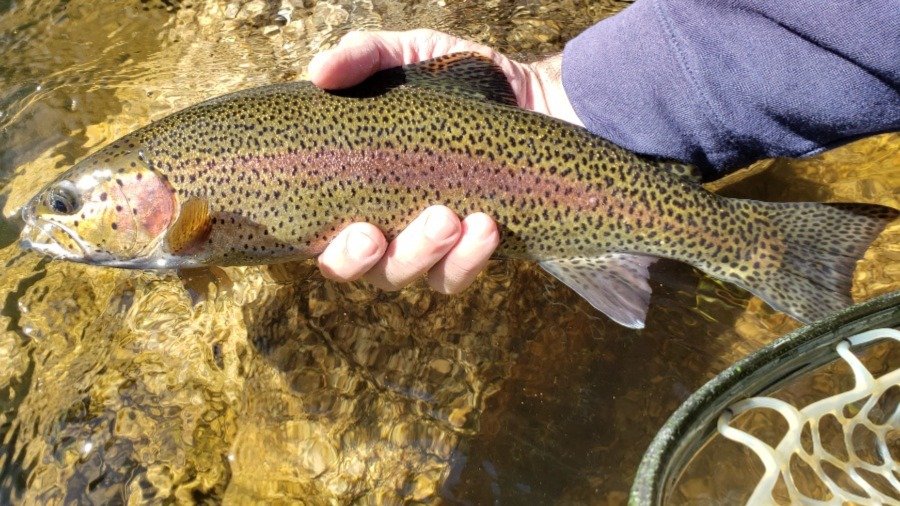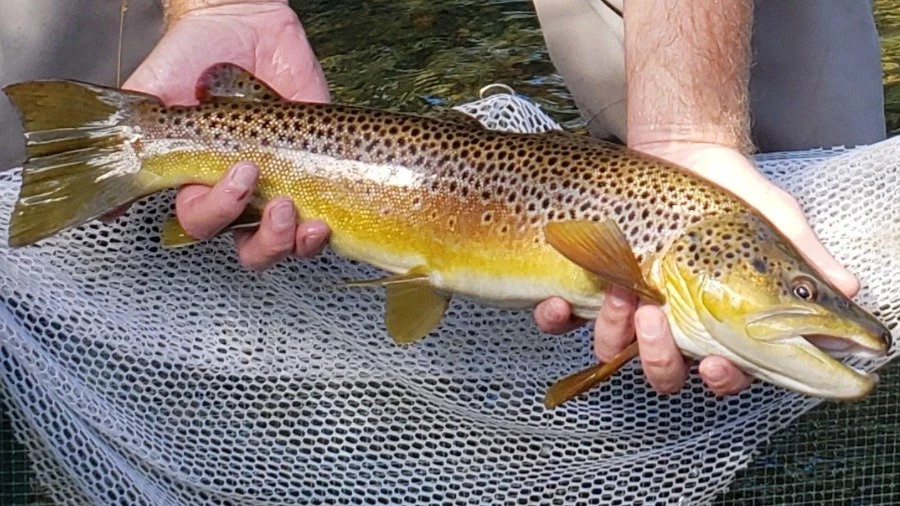Fishy Friday: Identifying local trout species
So you’ve caught a trout…but what kind is it? Read below to find out.
The Estes Valley is home to four different species of trout: rainbow, brown, cutthroat, and brook. Each species has its own preferred habitat, diet, and seasonal activity level, but most importantly, each one is often subject to different fishing regulations. Distinguishing one trout species from another, therefore, will not only help anglers to catch more fish, but will also ensure they’re following the various laws designed to help keep our fisheries sustainable for the future.
Fortunately, you don’t need a PhD in aquatic biology in order to identify our trout species at a glance. Below is a handy reference guide explaining the primary characteristics of each:
Rainbow Trout
Rainbow trout are named for the characteristic bright red stripe down their center lines. Their bodies are silvery with a greenish back, and are usually covered top to bottom with mottled black spots. Rainbows are the most common trout found in the Estes Valley because they are the main species that is artificially stocked in our reservoirs, but wild rainbows also exist here (read our previous Fishy Friday post for more info about distinguishing wild vs. stocked trout). Rainbows prefer cold, highly-oxygenated waters, and are most active during the spring spawn. These fish are primarily insect-eaters, often seeking out very tiny flies over more traditional lures or baits.
Brown Trout
Brown trout are often brown or gold in color, but that’s not always a reliable way to identify this species. Instead, look at their spots–notice how each spot is surrounded by a white ring, and how some spots (look above his ring finger) are red instead of black. Also note the characteristic purple spot just behind the eye. Browns can tolerate warmer water with less dissolved oxygen than the other species, so they are often dominant at lower elevations, particularly during the fall while they spawn. These fish are primarily meat-eaters, often preferring large baitfish imitations over insects or other forage.
Cutthroat Trout
Cutthroat trout are similar in both appearance and behavior to rainbow trout, and are the only species here that can interbreed with rainbows, making them a bit trickier to positively identify. Note how the pictured fish (which, to be clear, is a common West Slope variety and not an endangered Greenback) has smaller, more delicate spots that are less dense on its lower half, fading into a reddish color along the belly. Cutthroats are the only trout species that is native to Colorado, and are usually found at high altitudes far removed from civilization. Just like rainbows, they prefer to eat mostly insects, and are most active during the spring breeding season.
Brook Trout
Brook trout aren’t technically trout, they actually belong to the char family, which makes them quite easy to distinguish: while trout have dark spots on a light body, char have light spots on a dark body. Also note the distinct white edge on their lower fins, and the black inside of the mouth (trout mouths are white inside). Brook trout require the highest levels of dissolved oxygen of any of the species listed here, and so they are often found in small, high-elevation creeks and ponds. Notorious for their aggressive and carefree feeding habits, Brook trout can be caught on just about anything, especially in the early fall as they prepare to spawn and fatten up for the long winter ahead.
Evan Jones is the Outreach Coordinator and Blog Editor for EVWC. He’s been fishing in the Estes Valley for nearly 40 years.





